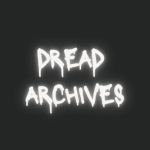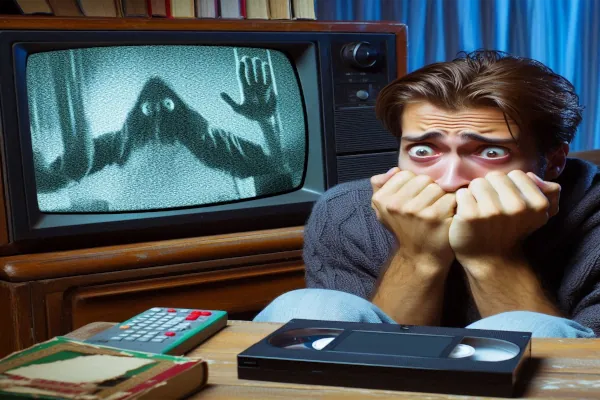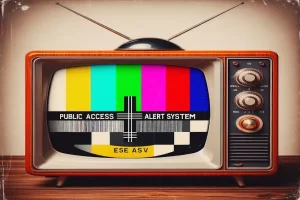In recent years, analogue technology has become a cornerstone in modern horror media, adding a layer of chilling realism and unease that digital effects alone often can’t achieve. By tapping into the nostalgic, yet unsettling qualities of outdated technology, such as VHS tapes, CRT televisions, and old radios, creators have found a way to amplify tension and fear in ways that feel both familiar and wrong. These vintage tools evoke a sense of decay and mystery, making them perfect for stories that thrive on atmosphere rather than gore or jump scares.
Analogue horror, a subgenre that plays on these elements, has surged in popularity, drawing in audiences who crave something different from traditional horror. The grainy visuals, warped sounds, and corrupted media all serve to disorient and unsettle, creating an immersive experience that lingers long after the screen goes black. In this blog, we’ll explore how the unique qualities of analogue technology heighten the horror experience, why it resonates so strongly with audiences, and how this genre has become a powerful force in modern storytelling. Prepare to step into the eerie, nostalgic world where technology isn’t just old—it’s terrifying.
Understanding Analogue Technology in Horror
Defining Analogue Technology in the Context of Horror
Analogue technology refers to older forms of media and devices that rely on physical, continuous signals to store and transmit information, such as VHS tapes, CRT televisions, cassette tapes, and film reels. These technologies contrast sharply with digital media, which stores data as discrete values in a binary format. The key difference is that analogue technology is inherently imperfect—its signals degrade over time, resulting in visible static, distortion, and wear.
In horror, these imperfections are more than just a relic of the past; they become tools for creating unease. Whether it’s a crackling VHS tape that distorts an image or a flickering CRT screen that can’t seem to hold a clear picture, the unpredictable and unreliable nature of analogue technology adds a palpable sense of discomfort. The imperfect and sometimes erratic nature of these media types invokes a fear of the unknown—what might be lurking just beyond the reach of a static-filled screen or a warped recording?
The Aesthetic of Imperfection
The physical limitations of analogue media are key to its ability to unsettle viewers. When a VHS tape begins to glitch, a CRT television flickers and distorts, or a cassette tape is played with too much wear, the viewer is presented with an image that feels alien and unsettling. These imperfections—static, color distortions, graininess, and audio glitches—don’t just make the experience feel “old”; they introduce an uncanny element, where the familiar becomes twisted and unsettling.
In horror, this “imperfection” is crucial. It creates a sense that something is wrong, not only with the technology itself but potentially with the world within the media. The distortions serve as a metaphor for deeper, more existential fears: things are out of place, beyond understanding, and just outside of clear perception. The broken, corrupted media reflects a world where reality itself is unreliable, and this uncertainty is a powerful tool for creating dread. Digital media, in contrast, is often too pristine and controlled, making it harder to replicate this visceral feeling of distortion and danger. In analogue horror, these imperfections are integral, making everything feel slightly off—just enough to evoke primal fear.
The Psychological Impact of Analogue Technology
Nostalgia and Uncertainty
Analogue technology stirs powerful emotions, especially among those who grew up with it. For older generations, there is an inherent nostalgia attached to VHS tapes, CRT televisions, and cassette players, evoking memories of simpler times or favorite childhood moments. However, this nostalgia is immediately countered by the unsettling nature of analogue technology’s decay. The very things that once felt familiar and comforting—like watching a favorite movie on a worn-out VHS tape or hearing the crackling sound of an old radio—now evoke a sense of discomfort as the once-pristine technology shows its age.
The psychological tension here lies in the uncanny: objects and media that once felt familiar are now corrupted and broken, triggering a deep unease. The very thing that once brought comfort now feels like it belongs to a forgotten era, one filled with things that may be better left undisturbed. The imperfections in the media, such as fuzzy images, degraded sound, and warped recordings, transform the once-safe into something dangerous. The blend of nostalgia and decay taps into a psychological response where something familiar becomes alien and eerie, amplifying the discomfort of engaging with these objects.
Unpredictability and the Unknown
Analogue devices are inherently unpredictable. VHS tapes might get stuck in the player, films can warp, and CRT televisions often flicker or lose signal. These malfunctions introduce a sense of chaos that is crucial to building suspense in horror. The unpredictability of analogue media—whether it’s a distortion on a screen or a sudden burst of static in the middle of a recording—keeps the audience on edge, never sure of what might happen next. This uncertainty is vital to horror, as it feeds into the fear of the unknown.
In analogue horror, the malfunctions are not just technical glitches—they represent a breakdown in reality itself. The distorted visuals, audio glitches, and static-filled interruptions create a sense of confusion, where viewers cannot rely on what they see or hear. The randomness of these disturbances, with no clear explanation, builds suspense and dread. The terror is not just in what is seen or heard, but in the potential for something to suddenly break or distort—something beyond control or understanding. This ever-present unpredictability keeps the viewer trapped in a state of uncertainty, unable to escape the growing sense of disorder and chaos, making the horror feel all the more real.
How Analogue Visuals Enhance Fear
Grainy, Flickering Imagery and Tension
Analogue visuals, especially from old VHS tapes or degraded film reels, have a distinct quality that is both nostalgic and deeply unsettling. The grainy, low-resolution images obscure details, creating a sense of something hidden or lurking just out of sight. This lack of clarity taps into a primal fear—what we can’t see or fully understand is often what scares us the most. When combined with the natural imperfections of analogue media, these blurry, grainy visuals foster an atmosphere of tension and discomfort, making it difficult for the viewer to fully grasp what’s happening on screen.
Flickering images are another key feature of analogue horror, with visual distortions that mimic technical malfunction. This flickering effect is more than just a technical issue—it’s a visual representation of malfunction and unpredictability, key elements in creating horror. The jittery visuals signal to the viewer that something is wrong with the environment they’re witnessing, and what seemed to be a calm or mundane moment can suddenly become a chaotic, disorienting experience. The flickering lights are a constant reminder that things are out of control, which heightens the anxiety of the situation, leaving the viewer uncertain about what might happen next.
Visual Corruption and Deformity
One of the most powerful ways analogue visuals enhance fear is through the unintentional visual corruption that occurs as old tapes degrade or malfunction. Faces can stretch, blur, or transform into grotesque, unrecognizable shapes, and seemingly ordinary scenes can be warped into nightmarish versions of themselves. This distorting effect makes what is familiar suddenly seem monstrous, an effect that is amplified by the analogue medium’s imperfections. A person’s face might become twisted, their eyes elongated, or their body distorted, creating visual deformities that evoke horror through their strangeness and unpredictability.
The use of VHS-style corruption is a hallmark of analogue horror, where images freeze, skip, or melt in unnerving ways. This corrupt visual style often occurs unexpectedly, adding to the feeling of unease and unpredictability. When a character’s face glitches out or the environment around them warps into a surreal, broken version of reality, it creates a sense of disorientation and dread. The viewer is left to wonder if these malfunctions are merely technical glitches or if they signify something far more sinister, deepening the overall sense of horror. By manipulating the visuals in such a way, analogue horror forces the viewer to confront a reality that is distorted, corrupted, and entirely out of their control.
The Role of Sound in Analogue Horror
Static, Hissing, and Distortion
The soundscape of analogue horror is often defined by the unique noises produced by old, malfunctioning technology—static, hissing, and the whirring of aging tapes. These sounds are immediately associated with a sense of decay and malfunction, and they generate an atmosphere of discomfort that adds layers to the visual horror. The static that fills the gaps between scenes or overpowers the dialogue is a constant reminder that something is wrong, both with the medium and the world it represents. It disrupts the familiar auditory experience, creating an unsettling atmosphere where nothing is quite right.
The hissing sound from an old tape or the whirling of a worn-out VHS player brings a sense of fragility to the horror experience. These noises often signal that the tape is struggling to function properly, mirroring the instability of the situation unfolding on-screen. The distortion of sound, where once-clear voices become unintelligible or corrupted, amplifies this feeling of unease. When a character’s voice crackles, distorts, or warps unnaturally, it takes away the comfort of understanding and replaces it with confusion and fear. These audio manipulations become a significant part of the horror, because they turn the familiar (a conversation, a sound, a song) into something foreign and hostile, increasing the tension.
The Sound of Silence
In addition to the discomfort of distorted or corrupted sound, the absence of sound plays a critical role in analogue horror. When analogue devices fail or degrade, silence can feel just as unnerving as a cacophony of noise. In these moments, the silence is not peaceful or calming; it’s oppressive. The absence of audio in a scene may signal that something is wrong, and the viewer is left with only their own senses to fill the void, which only heightens the tension.
The idea of “broken” audio—where sounds that should be familiar turn into unnatural, unrecognizable noises—further deepens the psychological horror. For example, the sound of a door creaking may become a distorted, metallic groan, or the ticking of a clock might transform into an erratic, chaotic noise. These once-comforting sounds, now corrupted, trigger feelings of unease and isolation. The broken audio leads the viewer to question what’s real and what’s not, and the fear of uncertainty is amplified. In analogue horror, even silence and distortion become active characters in the narrative, heightening the fear and making the viewer feel as though they are trapped in a world that’s slowly unraveling around them.
The Uncanny and the Sublime: How Analogue Horror Triggers Deep Fear
The Uncanny Valley and Analogues
Analogue horror thrives on the uncanny—a psychological effect where something familiar, yet distorted, evokes a sense of deep discomfort. In the context of analogue technology, this often manifests as familiar images, sounds, or motions that are subtly altered or malfunctioning. The “uncanny valley” is a term typically associated with robotics or animation, but it also applies to analogue horror, where viewers encounter footage or sounds that should feel familiar—like a family video or an old news broadcast—but are warped by the limitations of outdated technology.
This distortion creates an eerie sense that something is just not quite right. Watching what is supposed to be real footage—whether it’s a human face or a mundane scene—become strange or off-putting intensifies the fear. The visual glitches, corrupted audio, or warped images seem almost like a violation of reality itself, triggering a primal unease. The very act of encountering “real” footage that looks or sounds wrong amplifies the terror, as it suggests that the world itself is breaking down, and there are truths hidden just beneath the surface, obscured by the technology that is supposed to make everything clearer.
The Sublime Terror of Analogues
Analogue horror plays with the sublime—a concept that blends awe and terror, often evoked by experiences that transcend ordinary human understanding. The imperfection inherent in analogue media evokes both nostalgia and horror by reminding viewers of a time before digital perfection, when images and sounds were subject to the physical limitations of technology. The grainy textures of old VHS tapes, the crackling of radio static, and the distortion of old films stir a deep-seated fear, tapping into our primal anxieties about the unknown and the decaying. These imperfections are both unsettling and oddly beautiful, creating a unique aesthetic that feels as though it’s connected to something lost to time.
There’s also a terror in uncovering something that was never meant to be seen or heard, particularly in a seemingly innocuous medium like a VHS tape or an old radio broadcast. In analogue horror, these objects are more than just relics of the past; they become gateways to unsettling experiences. Watching or listening to these recordings suggests the discovery of long-hidden secrets or forgotten truths—things that were once deliberately concealed. The idea of uncovering lost media, things that were abandoned, forgotten, or erased, adds another layer of unease. The viewer knows that whatever they are witnessing is not just an artifact, but a clue to something far darker lurking beneath the surface, making the analogue medium itself both a source of beauty and a terrifying mystery.
The Impact of Analogue Technology on Storytelling
Narrative Limitations and Enhancements
Analogue technology’s inherent limitations—such as grainy footage, audio distortion, and low-resolution visuals—have a profound impact on storytelling within the genre. These technical restrictions, while initially seen as a drawback, are masterfully utilized in analogue horror to enhance the atmosphere and elevate the terror. By forcing creators to work with less-than-perfect media, analogue horror leans into minimalistic storytelling, using what is left unsaid, unseen, or distorted to build unease. The inability to see every detail, hear every sound clearly, or understand every message becomes a tool to intensify fear, allowing the imagination of the viewer to fill in the blanks with their own fears and anxieties.
Moreover, these limitations contribute to the sense of “found footage” or “lost media,” where the audience feels like they’re stumbling upon something forbidden or long forgotten. The grainy, deteriorated quality of the footage suggests that what they are witnessing is something rare—an artifact from another time or place that was never meant to be uncovered. This storytelling technique plays with the notion of secrecy and hidden truths, allowing for a more immersive experience where the viewer feels they are intruding on something dangerous or unsettling, much like stumbling upon a long-lost diary or forbidden video tape.
Found Footage and the Illusion of Authenticity
The allure of “found footage” is undeniable in analogue horror, as it offers a visceral sense of authenticity. These films or videos, often presented as if they were discovered by chance, convey a raw, unpolished glimpse into real, unedited horrors. The analogue technology—whether it’s the distorted audio, the flickering visuals, or the degraded film quality—adds a layer of believability that is harder to achieve with the crisp, clean visuals of digital media. It’s as if the horror we’re witnessing is not some scripted, manufactured experience, but rather an actual, unaltered event that we’ve stumbled upon, making the terror feel more immediate and real.
The use of analogue media, with its physicality and imperfections, creates an immersive experience where the boundaries between fiction and reality blur. The visual and auditory glitches of a VHS tape or an old film reel make the content feel like it’s not just a story, but a real discovery, often making the horror feel closer to home. Viewers become participants in the narrative, piecing together fragmented and corrupted footage to uncover a hidden truth. This illusion of authenticity is a powerful tool in analogue horror, drawing viewers deeper into the fear and making them question whether what they’re watching is truly fictional or something far more terrifyingly real.
Conclusion
In conclusion, analogue technology’s unique imperfections, unpredictability, and nostalgic appeal have solidified its place as a potent tool for amplifying fear in modern horror. From grainy, flickering imagery to distorted audio, these imperfections create an atmosphere of unease and suspense that digital media simply can’t replicate. The unpredictable nature of analogue devices, combined with the haunting familiarity of old technology, taps into deep-rooted psychological fears, amplifying the terror in ways that resonate on both a visceral and emotional level.
Analogue horror continues to captivate audiences by offering a chillingly authentic experience that blurs the line between reality and fiction. The genre’s ability to evoke nostalgia, discomfort, and mystery through outdated media makes it an enduring source of fascination for horror fans. It’s not just about what’s seen or heard, but the feeling that something is fundamentally “wrong” in the most unsettling way.
If you haven’t yet explored the eerie world of analogue horror, now is the time. Whether through films, games, or web series, the unsettling magic of analogue technology awaits. So, dive into this captivating genre, experience the terror firsthand, and uncover the dark secrets that only the grainy footage of the past can reveal.




